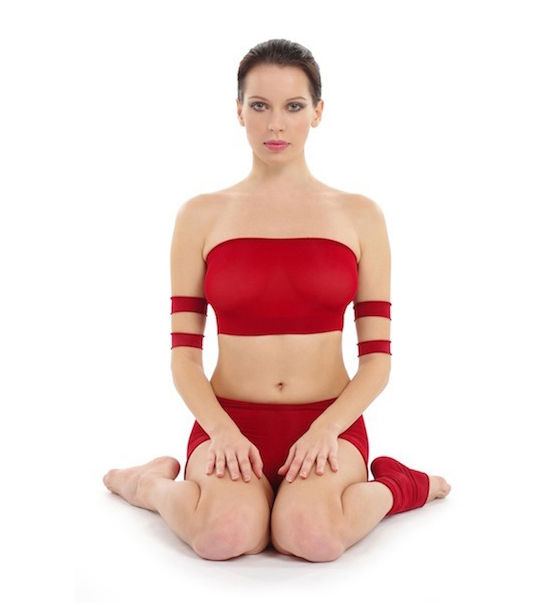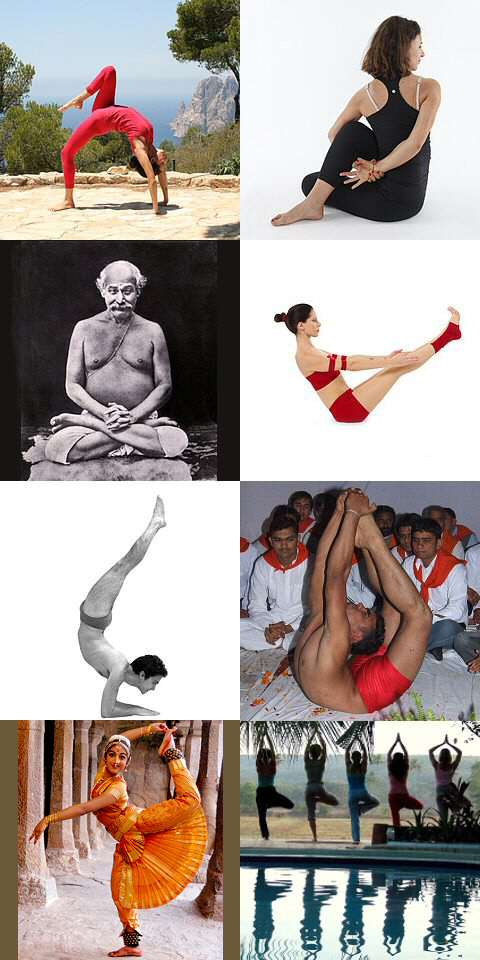|
Supta Virasana
Virasana (; ) or Hero Pose is a kneeling asana in modern yoga as exercise. Medieval hatha yoga texts describe a cross-legged meditation asana under the same name. Supta Virasana is the reclining form of the pose; it provides a stronger stretch. Etymology and origins The name comes from the Sanskrit words meaning "hero", and meaning "posture" or "seat"; () means "reclined". The name virasana is ancient, being found in the 8th century '' Pātañjalayogaśāstravivaraṇa'' (2.46-48) and the 13th century '' Vāsiṣṭha Saṁhitā'' (1.72), but in those texts the description is of a cross-legged meditation seat. The modern kneeling pose is found in 20th century texts such as B.K.S. Iyengar's ''Light on Yoga''; it is mentioned in Ashtanga (vinyasa) yoga texts (e.g. Maehle 2011, who recommends it for lengthening the quadriceps muscle). The yoga scholar Mark Singleton notes that a pose similar to Supta Virasana was described in Niels Bukh's early 20th century Danish text ''Pr ... [...More Info...] [...Related Items...] OR: [Wikipedia] [Google] [Baidu] |
Tirumalai Krishnamacharya
Tirumala Krishnamacharya (18 November 1888 – 28 February 1989) was an Indian yoga teacher, ayurvedic healer and scholar. He is seen as one of the most important gurus of modern yoga, and is often called "Father of Modern Yoga" for his wide influence on the development of postural yoga. Like earlier pioneers influenced by physical culture such as Yogendra and Kuvalayananda, he contributed to the revival of hatha yoga. Krishnamacharya held degrees in all the six Vedic ''darśanas'', or Indian philosophies. While under the patronage of the King of Mysore, Krishna Raja Wadiyar IV, Krishnamacharya traveled around India giving lectures and demonstrations to promote yoga, including such feats as apparently stopping his heartbeat. He is widely considered as the architect of ''vinyāsa'', in the sense of combining breathing with movement; the style of yoga he created has come to be called Viniyoga or Vinyasa Krama Yoga. Underlying all of Krishnamacharya's teachings was the p ... [...More Info...] [...Related Items...] OR: [Wikipedia] [Google] [Baidu] |
Kneeling Asanas
Kneeling is a basic human position where one or both knees touch the ground. According to Merriam-Webster, kneeling is defined as "to position the body so that one or both knees rest on the floor". Kneeling with only one knee, and not both, is called genuflection. Kneeling is a primate behavior used to convey deference by making the figure that is kneeling appear smaller than the other. Primates themselves establish a dominance hierarchy (or "pecking order") which is important to the survival and behavior of the group. Chimpanzees, for example, have a complex social group that involves a dominant male and a corresponding female, to whom the other males and the juvenile chimps are submissive. Males who threaten the hierarchy are often severely injured or killed; in some instances, the use of submissive behavior is necessary to ensure survival. Religion Humans have inherited the custom of submissive behavior, and kneeling has become prevalent in religious practices. It has been ... [...More Info...] [...Related Items...] OR: [Wikipedia] [Google] [Baidu] |
Sitting Asanas
An āsana (Sanskrit: आसन) is a body posture, originally and still a general term for a sitting meditation pose,Verse 46, chapter II, "Patanjali Yoga sutras" by Swami Prabhavananda, published by the Sri Ramakrishna Math p. 111 and later extended in hatha yoga and modern yoga as exercise, to any type of position, adding reclining, standing, inverted, twisting, and balancing poses. The ''Yoga Sutras of Patanjali'' define "asana" as " position thatis steady and comfortable". Patanjali mentions the ability to sit for extended periods as one of the eight limbs of his system.Patanjali ''Yoga sutras'', Book II:29, 46 Asanas are also called yoga poses or yoga postures in English. The 10th or 11th century '' Goraksha Sataka'' and the 15th century ''Hatha Yoga Pradipika'' identify 84 asanas; the 17th century '' Hatha Ratnavali'' provides a different list of 84 asanas, describing some of them. In the 20th century, Indian nationalism favoured physical culture in response to colon ... [...More Info...] [...Related Items...] OR: [Wikipedia] [Google] [Baidu] |
Buddhist Meditation
Buddhist meditation is the practice of meditation in Buddhism. The closest words for meditation in the classical languages of Buddhism are ''bhavana, bhāvanā'' ("mental development") and ''Dhyāna in Buddhism, jhāna/dhyāna'' (a state of meditative absorption resulting in a calm and luminous mind). Buddhists pursue meditation as part of the path toward Moksha, liberation from defilements (''Kleshas (Buddhism), kleshas'') and clinging and craving (''upādāna''), also called Bodhi, awakening, which results in the attainment of nirvana. The Indian Schools of Buddhism, Buddhist schools relied on numerous meditation techniques to attain meditative absorption, some of which remain influential in certain modern schools of Buddhism. Classic Buddhist meditations include ''anapanasati'' (mindfulness of breathing), ''Patikulamanasikara, asubha bhavana'' ("reflections on repulsiveness");Deleanu, Florin (1992)Mindfulness of Breathing in the Dhyāna Sūtras Transactions of the Internatio ... [...More Info...] [...Related Items...] OR: [Wikipedia] [Google] [Baidu] |
Roots Of Yoga
A root is the part of a plant, generally underground, that anchors the plant body, and absorbs and stores water and nutrients. Root or roots may also refer to: Art, entertainment, and media * ''The Root'' (magazine), an online magazine focusing on African-American culture * The Roots, a location in the video game '' Kya: Dark Lineage'' Films * ''Roots'' (film) (), a 1955 Mexican drama * '' Poor Relatives'', also released as ''Roots'', a 2005 Russian film * ''Roots'', the English title for the 2019 Tamil film '' Sethum Aayiram Pon'' Literature and stage plays * ''Koreni'' (novel) (English: ''The Roots''), a 1954 novel by Serbian author Dobrica Ćosić * ''Roots'' (play), a 1958 play by Arnold Wesker * '' Roots: The Saga of an American Family'', a 1976 novel by Alex Haley about slavery in the United States Music * Root (chord), the fundamental note of a chord * Roots music (other) Groups and individuals * Root (band), a Czech metal band * Root (singer), a Japanese ... [...More Info...] [...Related Items...] OR: [Wikipedia] [Google] [Baidu] |
Yoga Dipika
Yoga (UK: , US: ; 'yoga' ; ) is a group of physical, mental, and spiritual practices or disciplines that originated with its own philosophy in ancient India, aimed at controlling body and mind to attain various salvation goals, as practiced in the Hindu, Jain, and Buddhist traditions. Yoga may have pre-Vedic origins, but is first attested in the early first millennium BCE. It developed as various traditions in the eastern Ganges basin drew from a common body of practices, including Vedic elements. Yoga-like practices are mentioned in the ''Rigveda'' and a number of early Upanishads, but systematic yoga concepts emerge during the fifth and sixth centuries BCE in ancient India's ascetic and Śramaṇa movements, including Jainism and Buddhism. The ''Yoga Sutras of Patanjali'', the classical text on Hindu yoga, samkhya-based but influenced by Buddhism, dates to the early centuries of the Common Era. Hatha yoga texts began to emerge between the ninth and 11th centuries, o ... [...More Info...] [...Related Items...] OR: [Wikipedia] [Google] [Baidu] |




